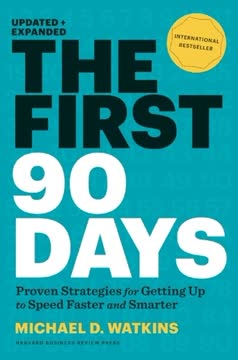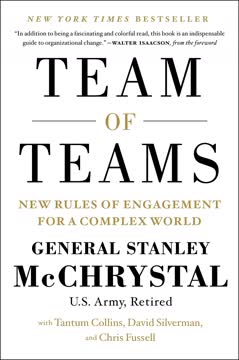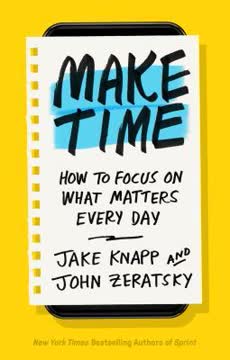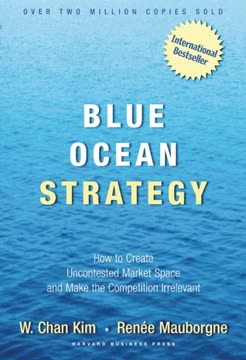Key Takeaways
1. Strategy is about shaping the future, not just planning
Strategy is about shaping the future – it is about how people attain desirable ends with available means.
Strategy is proactive. It's not just about predicting the future, but actively creating it. This involves setting clear objectives, understanding the current environment, and taking deliberate actions to move towards desired outcomes. Effective strategy requires:
- A clear vision of the desired future state
- Understanding of current resources and capabilities
- Identification of potential obstacles and opportunities
- Flexibility to adapt as circumstances change
Balance planning and action. While planning is important, excessive planning can lead to paralysis. Successful strategists know when to plan and when to act, often using an iterative approach that allows for continuous refinement based on real-world feedback.
2. Effective strategists balance analytical and creative approaches
The analytical tools can be used creatively to contribute something worthwhile and – if you wish – difficult to copy.
Combine analysis and creativity. Successful strategy requires both rigorous analysis and creative thinking. Analytical tools provide a framework for understanding the current situation and potential outcomes, while creativity allows for innovative solutions and unique approaches.
Key elements of this balanced approach include:
- Using analytical tools to gain insights into markets, competitors, and internal capabilities
- Applying creative thinking to develop unique solutions and identify new opportunities
- Challenging assumptions and considering multiple perspectives
- Encouraging diverse input from team members with different backgrounds and expertise
Avoid over-reliance on either approach. Pure analysis can lead to paralysis by analysis, while unchecked creativity may result in unrealistic or poorly executed strategies. The goal is to find the right balance for your specific situation and organizational culture.
3. Reacting to opportunities is as crucial as planning
Reacting is as important as planning.
Embrace opportunism. While having a clear plan is important, the ability to recognize and quickly capitalize on unexpected opportunities can be a significant source of competitive advantage. This requires:
- Developing a culture of agility and responsiveness
- Empowering employees to make decisions and take action
- Maintaining flexibility in resource allocation
- Regularly scanning the environment for potential opportunities
Balance stability and flexibility. Organizations need a stable core to operate efficiently, but also need the flexibility to adapt to changing circumstances. This can be achieved through:
- Clear, but adaptable, strategic objectives
- Robust processes that allow for rapid decision-making
- A culture that values both consistency and innovation
- Regular review and adjustment of strategies based on new information
4. Understand your competitive environment and adapt accordingly
Look up, down, back and ahead.
Comprehensive environmental scanning. Effective strategy requires a deep understanding of the competitive landscape, including:
- Current competitors and their strategies
- Potential new entrants to the market
- Substitute products or services
- Changing customer needs and preferences
- Technological advancements
- Regulatory and economic factors
Adapt your approach. Different competitive environments require different strategic approaches. Consider factors such as:
- Level of industry maturity
- Rate of technological change
- Intensity of competition
- Customer sophistication
Tailor your strategy to match the specific challenges and opportunities in your environment, while also considering how you might be able to shape that environment to your advantage.
5. Identify and leverage your organization's core competencies
Every company is a collection of skills and resources.
Understand your unique strengths. Core competencies are the fundamental strengths or strategic advantages of a business. They are the combination of pooled knowledge and technical capacities that allow a business to be competitive in the marketplace. Identifying and leveraging these competencies involves:
- Assessing internal capabilities and resources
- Identifying what you do better than competitors
- Understanding how these strengths create value for customers
- Aligning strategy to exploit and further develop these competencies
Develop and protect core competencies. Once identified, core competencies should be:
- Nurtured through continued investment and development
- Protected from competitors through various means (e.g., patents, trade secrets)
- Leveraged across different products or markets when possible
- Regularly reassessed to ensure they remain relevant and valuable
6. Create and exploit competitive advantages
Smart strategy is the shortest route to desirable ends with available means.
Develop sustainable advantages. Competitive advantages are the attributes that allow an organization to outperform its competitors. These can be based on various factors, including:
- Cost leadership: Offering products or services at a lower cost than competitors
- Differentiation: Providing unique or superior value to customers
- Focus: Serving a specific market segment better than competitors
- Innovation: Continuously developing new products, services, or processes
Exploit advantages strategically. Once competitive advantages are identified or developed, they should be:
- Aligned with overall strategic objectives
- Communicated clearly to customers and stakeholders
- Continuously reinforced and improved
- Protected from imitation by competitors
- Leveraged to enter new markets or develop new products/services
7. Implement strategies through effective change management
Strategy involves change because it has to adapt to competitors, technology and customers.
Manage the human side of change. Implementing new strategies often requires significant organizational changes. Effective change management involves:
- Clearly communicating the reasons for change and expected outcomes
- Involving employees in the change process to gain buy-in
- Providing necessary training and resources
- Addressing resistance and concerns proactively
- Celebrating early wins to build momentum
Align systems and processes. Successful strategy implementation requires alignment of:
- Organizational structure
- Performance metrics and incentives
- Resource allocation
- Decision-making processes
- Company culture
Regularly assess and adjust these elements to ensure they support the new strategic direction.
8. Continuously learn and adapt your strategy
Strategy is a stream of decisions and actions.
Embrace strategic learning. In a rapidly changing environment, the ability to learn and adapt quickly is crucial. This involves:
- Regularly reviewing and reassessing strategic assumptions
- Encouraging experimentation and learning from both successes and failures
- Developing systems for capturing and sharing knowledge across the organization
- Fostering a culture of continuous improvement and innovation
Implement feedback loops. Create mechanisms for:
- Gathering data on strategy performance
- Analyzing results and identifying trends
- Making rapid adjustments based on new information
- Sharing insights across the organization
This allows for ongoing refinement and improvement of the strategy.
9. Balance short-term execution with long-term vision
Strategy is about moving from where you are to where you want to be.
Maintain strategic focus. While day-to-day operations are important, it's crucial not to lose sight of long-term objectives. This balance can be achieved by:
- Setting clear, measurable long-term goals
- Breaking these down into shorter-term objectives and milestones
- Regularly reviewing progress and adjusting course as needed
- Ensuring resource allocation supports both short-term needs and long-term investments
Communicate the big picture. Help everyone in the organization understand:
- The overall strategic vision
- How their individual roles contribute to long-term success
- The connection between short-term actions and long-term outcomes
This alignment helps maintain focus and motivation, even during challenging periods.
10. Consider sustainability and ethical implications in strategy
If you care about your world, then you might also care about shaping a sustainable future.
Integrate sustainability. Increasingly, successful strategies must consider long-term sustainability, both for the organization and the broader environment. This involves:
- Assessing the environmental and social impact of strategic decisions
- Identifying opportunities to create value through sustainable practices
- Developing strategies that balance economic, social, and environmental considerations
- Building resilience against potential sustainability-related risks
Embrace ethical considerations. Ethical behavior is not just morally right, but often strategically advantageous. Consider:
- The long-term reputational impact of strategic decisions
- Potential regulatory or legal implications of actions
- Alignment with stakeholder values and expectations
- Opportunities to create value through ethical leadership
By integrating sustainability and ethics into strategic thinking, organizations can build long-term value while contributing positively to society.
Last updated:
FAQ
What's The Strategy Book by Max McKeown about?
- Focus on Strategy: The book is about understanding and applying strategic principles to shape the future of organizations, moving from current to desired states using available means.
- Practical Application: It provides tools and frameworks to help readers become effective strategic thinkers and leaders, making complex leadership situations more manageable.
- Real-World Examples: Numerous examples illustrate how companies have successfully implemented strategic principles, offering insights into real-world applications.
Why should I read The Strategy Book by Max McKeown?
- Accessible Content: Designed to be easy to read and understand, it suits both novices and experienced strategists, avoiding jargon while providing deep insights.
- Comprehensive Toolkit: Offers strategic models and frameworks like SWOT analysis and Porter’s Five Forces, applicable in various business contexts.
- Enhance Leadership Skills: Helps develop strategic thinking and leadership skills, enabling effective shaping of an organization’s future.
What are the key takeaways of The Strategy Book by Max McKeown?
- Dynamic Strategy: Strategy is a living process requiring continuous adaptation to changing circumstances and competitive environments.
- Importance of Thinking: Emphasizes that strategic thinking is as crucial as planning, encouraging creative thinking before detailed planning.
- Engagement is Crucial: Successful strategy involves engaging others, ensuring organizational understanding and support for the strategic direction.
What are the best quotes from The Strategy Book by Max McKeown and what do they mean?
- “However beautiful the strategy, you should occasionally look at the results.”: Highlights the importance of evaluating strategy effectiveness beyond its design.
- “Strategy is about moving from where you are to where you want to be.”: Captures strategy as a journey requiring clear objectives and actionable steps.
- “The future cannot be predicted, but futures can be invented.”: Suggests that while outcomes are uncertain, strategic actions can shape the future.
How does The Strategy Book by Max McKeown define strategy?
- Shaping the Future: Strategy is the process of shaping the future by achieving desirable ends with available means, involving decisions on actions to take or avoid.
- Connection of Actions: Emphasizes linking past, present, and future actions to react intelligently to events and opportunities.
- Balancing Creativity and Analysis: Effective strategy balances creative thinking with analytical approaches, adapting to both stable and dynamic market conditions.
How does one become a strategic thinker according to The Strategy Book by Max McKeown?
- Open Your Mind: Involves seeing the bigger picture beyond immediate tasks and asking challenging questions.
- Engage with Others: Collaboration with team members and stakeholders generates diverse ideas and perspectives, enhancing strategic thinking.
- Continuous Learning: Strategic thinking is developed through practice, reflection, and learning from successes and failures.
What tools and models does The Strategy Book by Max McKeown include?
- SWOT Analysis: Identifies strengths, weaknesses, opportunities, and threats, providing a comprehensive view of the strategic landscape.
- Porter’s Five Forces: Analyzes competitive forces within an industry, helping strategists understand market dynamics.
- Balanced Scorecard: Measures performance beyond financial metrics, incorporating customer, internal process, and learning perspectives.
How does The Strategy Book by Max McKeown suggest managing change effectively?
- Understanding Change Dynamics: Emphasizes understanding change nature and its impact on strategy, encouraging proactive leadership.
- Engaging Stakeholders: Involves engaging all stakeholders to ensure understanding and support for change.
- Flexibility and Adaptation: Encourages organizations to remain flexible and adapt strategies as new information arises, fostering continuous improvement.
What is the significance of competitive advantage in The Strategy Book by Max McKeown?
- Foundation of Strategy: Central to strategy, determining how an organization can outperform rivals by delivering unique customer value.
- Types of Advantage: Discusses cost leadership, differentiation, and focus as competitive advantages to achieve strategic goals.
- Sustaining Advantage: Emphasizes continual innovation and adaptation to maintain competitive advantage in a changing market.
How can one apply the concepts from The Strategy Book by Max McKeown in real-world scenarios?
- Practical Application: Encourages applying strategic tools and frameworks to specific business contexts, tailoring them to unique challenges.
- Scenario Planning: Suggests using scenario planning to anticipate future developments and prepare strategic responses.
- Iterative Process: Views strategy as iterative, where feedback and results inform ongoing adjustments to the strategic plan.
What is the importance of understanding the corporate lifecycle in The Strategy Book by Max McKeown?
- Identifying Growth Stages: Helps strategists identify organizational stages—startup, growth, maturity, or decline—to tailor strategies accordingly.
- Strategic Renewal: Discusses the need for innovation and adaptation to transition successfully between lifecycle stages.
- Avoiding Pitfalls: Recognizing lifecycle stages helps avoid common pitfalls, allowing for informed decision-making.
How does The Strategy Book by Max McKeown define strategic renewal?
- Continuous Improvement: Defined as continuously adapting and innovating to meet changing market demands and internal capabilities.
- Proactive Change Management: Encourages seeking renewal opportunities proactively to stay ahead of competitors.
- Engagement Across Levels: Requires engagement from all organizational levels, fostering a culture of innovation and responsiveness.
Review Summary
The Strategy Book receives mixed reviews, with an average rating of 3.55/5. Readers appreciate its practical approach, useful tools, and accessible writing style. Many find it helpful for business leaders and strategists, praising its bite-sized concepts and real-world applicability. However, some criticize its shallow treatment of topics, lack of depth, and repetitive content. The book is seen as a good introduction to strategy for beginners, but more experienced readers may find it lacking in advanced concepts and detailed examples.
Similar Books










Download PDF
Download EPUB
.epub digital book format is ideal for reading ebooks on phones, tablets, and e-readers.




